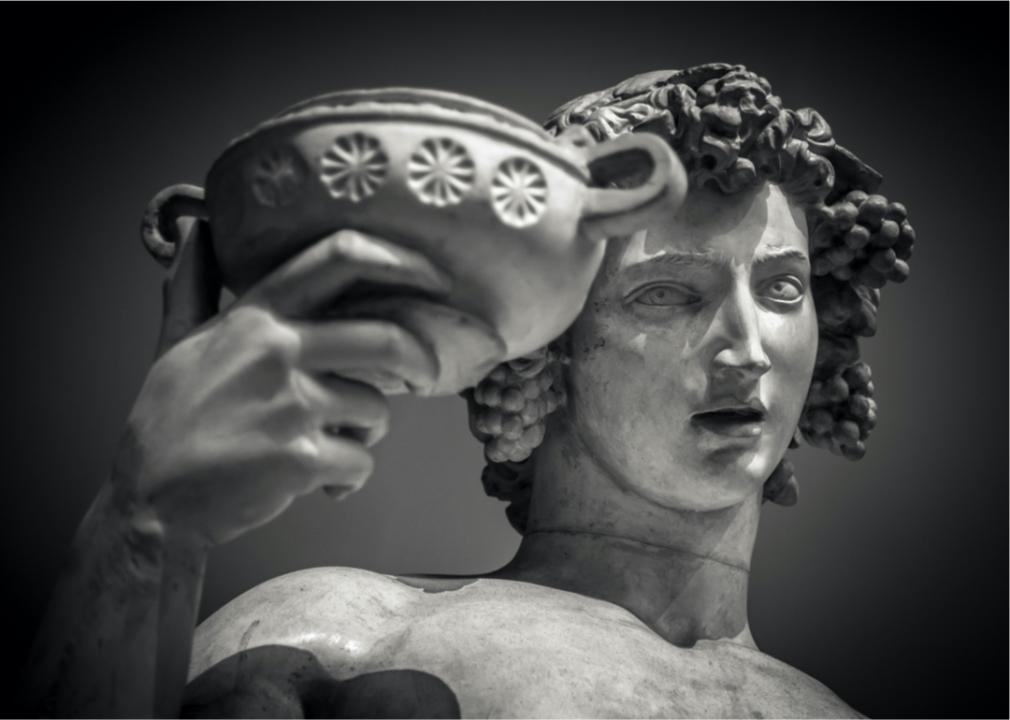History of fermentation around the world
Published 7:00 am Saturday, November 13, 2021
Gilmanshin // Shutterstock
History of fermentation around the world
Consumption of fermented foods jumped 149% in 2018, according to Forbes, demonstrating not just the staying power of this ancient form of food, but how globalization has introduced fermented foods to new cultures and palates, resulting in explosive popularity.
Rockefeller University refers to fermentation as a “culinary exploitation of microbial systems.” The natural chemical process of fermentation has been around for a very long time, lasting through millennia to bring today’s eaters delectable flavors and positive probiotic effects on the human gut. It is one of the oldest practices in human history, dating back to 10,000 BCE, though spontaneously occurring fermentation predates the human species altogether. This metabolic process transforms and preserves food using common microorganisms such as bacteria, yeast, and mold.
Fermentation is also responsible for the key ingredients in probiotics, whose popularity has skyrocketed in the last decade. According to the National Institute of Health, as of 2012, around 4 million adults in the United States had tried probiotics. Probiotics are hailed for their health benefits, and their history is deeply rooted in the process of fermentation.
Stacker compiled a comprehensive list of the key historical events that led to the modernization of fermentation.
You may also like: IPAs to Pilsners: The best beer of every type
![]()

DEA/G. DAGLI ORTI/De Agostini via Getty Images
10,000 BCE: Spontaneous dairy fermentation occurs
Human-caused fermentation dates back to 10,000 BCE with the preservation of milk from camels, cattle, sheep, and goats. Dairy naturally ferments given the ideal climate and its essential microflora. In the searing temperatures of North Africa, milk spontaneously fermented, making the first documented yogurt. Fermented dairy is nutrient-dense and boosts gut health; buttermilk, yogurt, kefir, sour cream, and cheese are the most probiotic-rich dairy products.
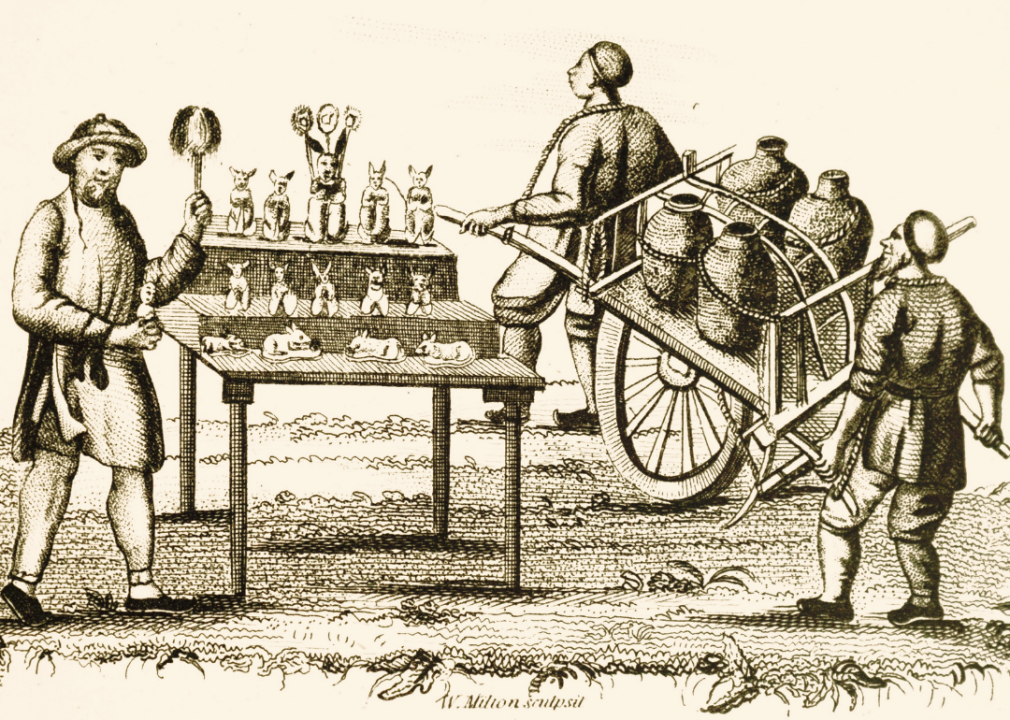
Universal History Archive/Universal Images Group via Getty Images
7,000 BCE: Ancient Chinese civilizations begin to brew
In 2004, archeologists discovered the world’s oldest brewed beverage by running chemical tests on Neolithic Chinese pottery dating back to 7,000 BCE. Made of fermented rice, honey, and fruit, this brew predates the previous record for the oldest evidence of brewing, found in Iran, by almost 1,500 years. Ingredients in the ancient beverage are still found in modern alcoholic drinks: fermented fruit is used in wine, fermented rice is used in sake, and fermented honey is used in mead.
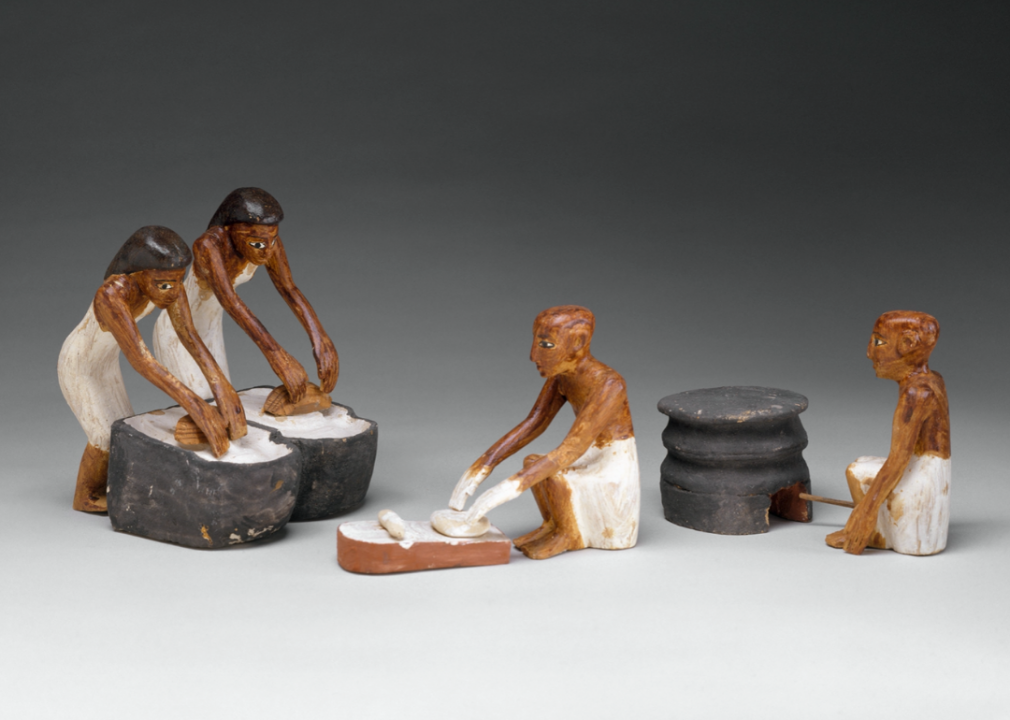
Metropolitan Museum of Art // Wikimedia Commons
3,500 to 300 BCE: Ancient Egyptians perfect the art of leavening bread
Ancient Egyptians first experimented with yeast in dough fermentation for leavening bread. Bread was a staple in the ancient Egyptian diet, providing a nutrient-dense source of vitamins, minerals, proteins, and starch. Egyptian fermentation techniques developed between 3,500 and 300 BCE are still in use today. Bread is consumed globally, but it often lacks nutrient density due to refined grains and large-scale production. To find nutritious bread, look for key terms like sprouted, whole grain, and whole wheat, and avoid white flour and added sweeteners.

Andrea Izzotti // Shutterstock
2,000 BCE: The cucumber is pickled
Pickled cucumbers originated in the Tigris Valley, or modern-day Iraq, in 2,000 BCE. While ancient Chinese cultures are known for championing vegetable fermentation, the pickling of cucumbers in the Middle East some 1,700 years earlier truly opened the door. Pickles have come a long way since then and are a staple in many households around the world. Thanks to their fermentation, pickles can boost antioxidant intake, and drinking pickle juice can help balance electrolytes and relieve muscle cramps.

Wellcome Images // Wikimedia Commons
500 BCE: Chinese use moldy soybeans as an antibiotic
Beginning in 500 BCE, moldy soybean curds were used by the Chinese as an antibiotic treatment for boils and carbuncles. Fermentation wasn’t a new process, but this was the first documented use of fermented food as medicine. Along with moldy soybean curds, moldy cheese was also used to treat infected wounds. These ancient, moldy medicines provided a template for the development of future antibiotics like penicillin.
You may also like: States with the most multi-generational households
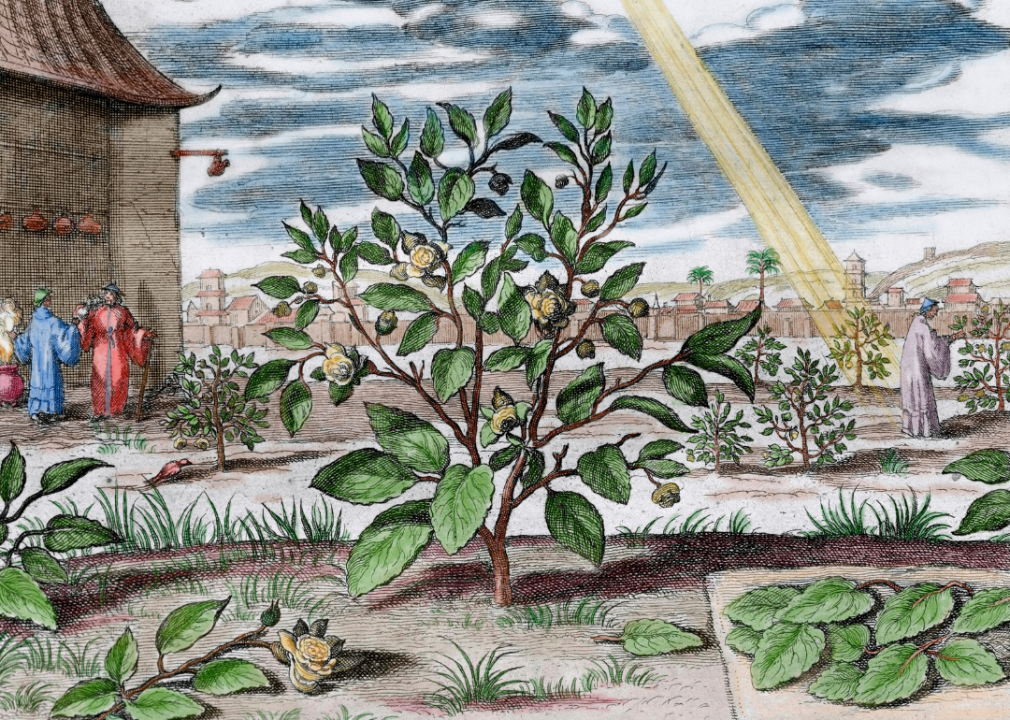
Athanasius Kircher/PHAS Universal Images Group via Getty Images
200 BCE: Fermenting of tea leaves
Tea leaf fermentation was first documented in ancient Chinese civilizations around 200 BCE, yielding the wildly popular, gut-friendly drink kombucha. A mixture of tea, sugar, bacteria, and yeast ferments for a week to produce this slightly sweet, slightly vinegary, fizzy beverage. Depending on the brew, most kombucha is rich in antioxidants, minerals, B vitamins, and probiotics. Still, it’s essential to choose your kombucha wisely, so opt for lower sugar content and naturally derived flavorings.
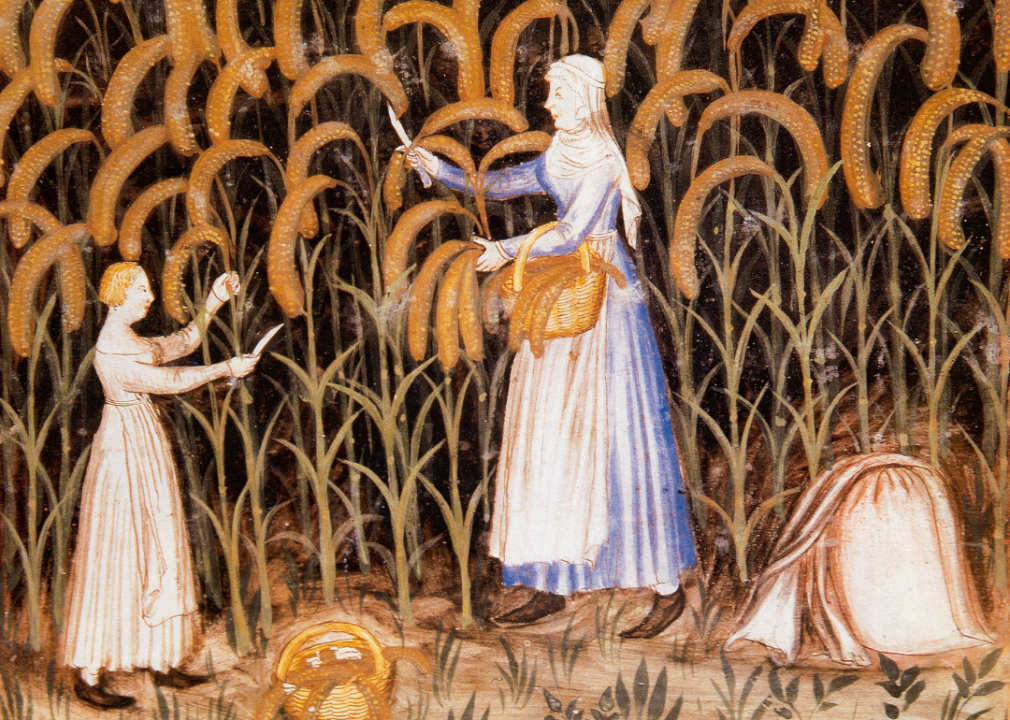
Prisma/UIG // Getty Images
500 to 1,000 AD: Cereal-legume fermentation goes global
Cereal-legume fermentation may be the most explosive of historical fermentation stages. The diversity of cereals—wheat, rice, rye, oats, barley, corn, and sorghum—and legumes—beans, peas, and lentils—led to a variety of fermented products produced around the world. Alone, cereals and legumes offer an adequate source of nutrition, but when fermented, their nutrient density intensifies, making these crops excellent for achieving a nutrient-dense diet.
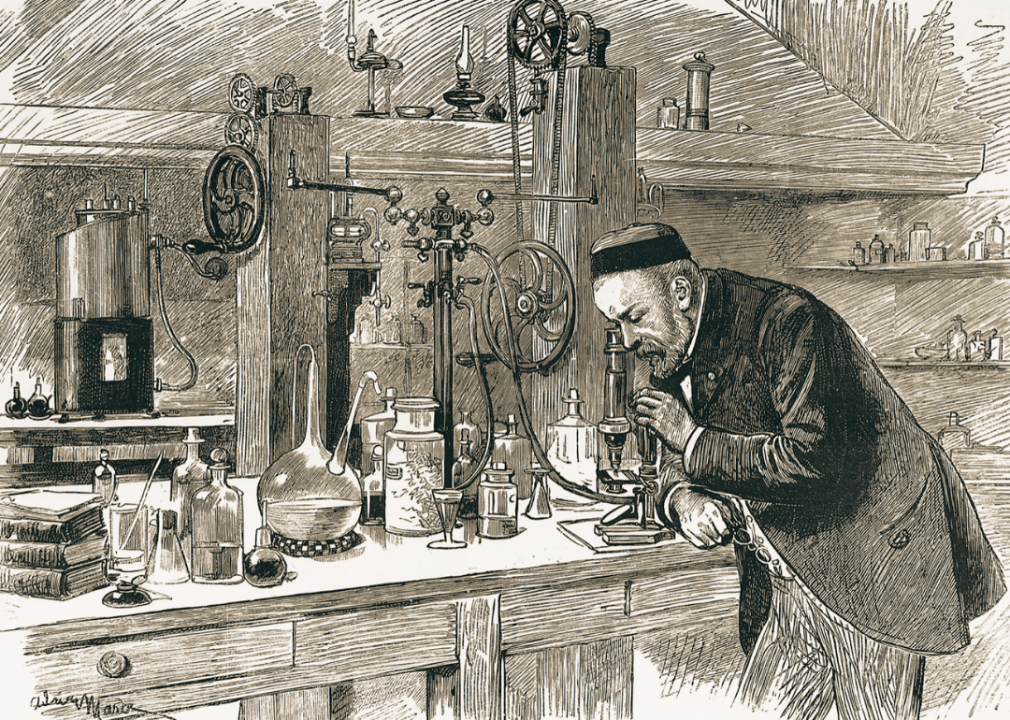
Adrian Mare/Wellcome Images // Wikimedia Commons
1856: Louis Pasteur takes a microscope to microbes
Antonie van Leeuwenhoek first identified microorganisms in 1665, setting the stage for French scientist Louis Pasteur to piece together the rest nearly 200 years later. In 1856, Pasteur discovered that fermentation requires live cells, and yeast plays a critical role in the process. His heat-related experiments would later be utilized in the development of pasteurization.
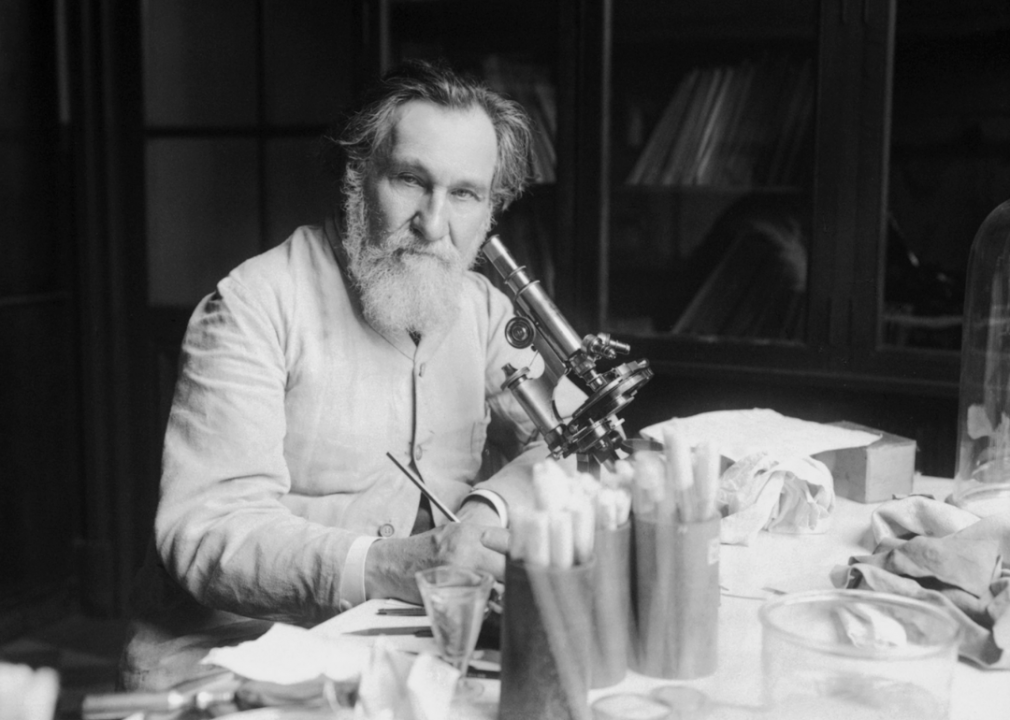
Agence Rol // Wikimedia Commons
1910 to 1935: Identification of bacterial strains
In the 1900s, Elie Metchnikoff, a Russian bacteriologist, discovered the bacterial strain Bulgarian bacillus in fermented milk. He named the strain after the Bulgarian culture he was studying for their long lifespan, though it was later reclassified as Lactobacillus acidophilus. Using Metchnikoff’s findings as a platform, Yale researcher Leo F. Rettger found that strains of Lactobacillus were incredibly active within the human gut, paving the way for the development of probiotics.
[Pictured: Ilya Ilyich Mechnikov in 1913.]

Boontoom Sae-Kor // Shutterstock
1970 to present: Production of probiotics
The 1970s saw the first ingestible probiotics hit store shelves. While this was the first instance of designer probiotics, the idea behind probiotics is not new. Metchnikoff called the Lactobacillus that he discovered a probiotic, and, even further back, a fourth-century Chinese handbook references fecal microbiota transplants. Fermentation means that probiotics contain a combination of microorganisms, and these microorganisms are capable of supporting digestion, the immune system, and mental health.
You may also like: Could you pass the U.S. citizenship test?


